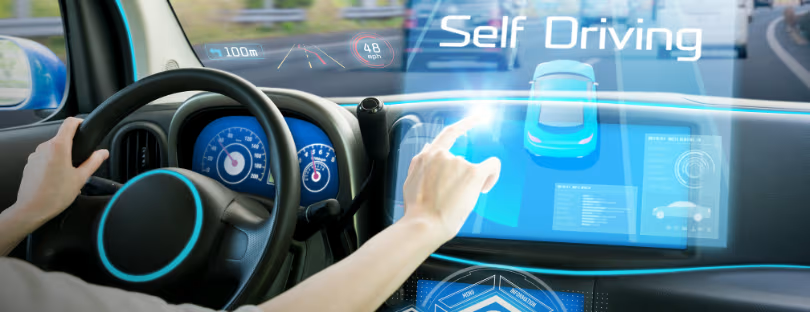
eSIM Adoption Soars: What Travelers Need to Know
If you’re a frequent flyer or just someone who’s tired of juggling multiple SIM cards on your travels, you’ve probably noticed something this year: eSIM ‘s are everywhere. And if you haven’t jumped on the bandwagon yet, 2025 might just be the year to do it. esim 2025
From airport vending machines selling QR codes to new smartphones ditching physical SIM trays entirely, eSIM adoption is officially exploding. And it’s not just a tech trend—it’s something that can seriously simplify the way you stay connected when you travel.
So, what’s fueling this surge? What should you watch out for? And is switching to an eSIM really as seamless as it sounds?
Let’s unpack what travelers really need to know in 2025.
What Is an eSIM Again? (And Why Should You Care?)
Let’s start with the basics, just in case.
An eSIM (embedded SIM) is a tiny chip that’s built into your phone or device—it does exactly what a physical SIM card does, just without the plastic. Instead of swapping SIMs when you land in a new country, you just scan a QR code or activate a profile from an app. Boom—you’re online.
It sounds small, but the convenience is massive. No more fiddling with pins to open SIM trays, no losing tiny cards, and no visits to local telecom stores when you just want to get on WhatsApp or order an Uber.
Why 2025 Is a Game-Changer for eSIM
A few years ago, eSIMs were still a niche. In 2025? Not anymore.
Here’s what’s pushing adoption into the mainstream:
- More Devices Support It: Almost every major smartphone now supports eSIM—iPhones, Samsungs, Pixels, and even some budget Androids. Some laptops and tablets have jumped in, too.
- eSIM-Only Phones Are Now a Thing: Apple ditched the SIM tray in the U.S. versions of the iPhone 14, and others are following suit globally. This nudges more users into trying eSIM, whether they planned to or not.
- Better Global Plans: Providers now offer smarter, more competitive eSIM plans that work across multiple countries. No more paying €15 for 1GB in Paris when you can get 10GB across Europe for the same price.
- Roaming Charges Are Still Wild: Traditional roaming costs haven’t gone away, so travelers are waking up to the fact that eSIMs can save them serious money.
So… How Does It Work in Real Life?
Let’s say you’re heading to Tokyo, then hopping to Bangkok, and finally chilling in Bali for a few weeks. Here’s how a trip like that looks in 2025 with an eSIM:
- Before you even leave home, you go online, choose a regional eSIM plan (Asia or worldwide), and get a QR code emailed to you.
- Scan the QR code, and the eSIM profile gets added to your phone instantly. No physical delivery. No waiting.
- When you land in Japan, the plan activates automatically. You’re connected before you even get your luggage.
- Hop on a flight to Thailand? Your plan still works. No stress.
No trips to phone shops. No mystery charges on your next phone bill. No tech headaches.
What Travelers Love About eSIMs
- AIRALO
-
eSIM for
Europe
39 countries
-
1 GB – 7 days – €4.27
3 GB – 30 days – €11.09
10 GB – 30 days – €31.57
- AIRHUB
-
eSIM for
Europe
34 countries
-
1 GB – 7 days – €2.99
3 GB – 30 days – €5.12
10 GB – 30 days – €11-09
- aloSIM
-
eSIM for
Europe
32 countries
-
1 GB – 7 days – €5.00
3 GB – 30 days – €13.00
10 GB – 30 days- €36.00
- GigSky
-
eSIM for
Europe
36 countries
-
1 GB – 7 days – €6.99
3 GB – 15 days – €11.19
10 GB – 30 days – €27.99
- iRoamly
-
eSIM for
Europe
39 countries
-
1 GB – 7 day – €6.83
3 GB – 15 days – €10.24
10 GB – 30 days – €18.77
- Maya Mobile
-
eSIM for
Europe
34 countries
-
1 GB – 7 days – –
5 GB – 15 days – €5.99
10 GB – 30 days- €13.99
- NOMAD
-
eSIM for
Europe
36 countries
-
1 GB – 7 days – €4.71
3 GB – 15 days – €10.27
10 GB – 30 days – €15.41
- UBIGI
-
eSIM for
Europe
29 countries
-
500 MB – 1 day – €2.00
3 GB – 30 days – €8.00
10 GB – 30 days – €19.00
- VOIA
-
eSIM for
Europe
34 countries
-
1 GB – 7 days – €2.69
3 GB – 15 days – €5.05
10 GB – 30 days- €11.70
The Best eSIM Finder brings together 100+ providers in one place, giving you a clear view of everything from data limits and business options to tethering, crypto payments, coverage, travel extras, refund policies, discounts, and reviews—so you don’t just compare plans, you understand which one truly fits your needs. Start exploring today and find the plan that fits you best.
If you’ve ever:
- Arrived in a new country without data
- Struggled to translate a SIM package in a language you don’t speak
- Had to carry multiple SIM cards and adapters in your wallet
Then you’ll probably fall in love with eSIMs too.
But what’s really exciting about eSIMs in 2025 is how flexible they’ve become. Most travelers use them for:
- Short-term data plans (1GB, 5GB, 10GB, etc.)
- Multi-country regional plans
- Backup internet access in case your hotel Wi-Fi is garbage
- Dual-SIM setups, where your main number stays active for calls, but all your data runs on a cheap eSIM plan
It’s like having a local SIM in every country—without any of the hassle.
Any Downsides?
Of course, nothing’s perfect. A few things to keep in mind:
- You still need to choose wisely: Not all eSIM providers are created equal. Some have spotty networks or weird throttling policies. (Hint: do your homework or check reviews before you buy.)
- You can’t switch phones easily: Most eSIMs are tied to a specific device. If your phone dies mid-trip, it’s not as easy as popping a SIM into a new one.
- iMessage and WhatsApp quirks: If you’re using eSIM only and not your usual number, apps like WhatsApp or iMessage might need re-verification. Annoying, but fixable.
What to Look for in an eSIM Provider in 2025
With so many options out there, picking the right one matters. Here’s what savvy travelers are looking for:
✅ Coverage: Does the eSIM work in all the countries you’re visiting?
✅ Speed & Network: Will you get 4G/5G, and which local carriers does it use?
✅ Top-up Flexibility: Can you add more data easily without buying a new plan?
✅ Transparency: Are the prices clear and all-in, or are there hidden activation fees?
✅ Good Support: If something goes wrong mid-trip, is help one chat away?
Some popular names include BNESIM, Saily, Airhub, and Ubigi—but new players are entering the space every month.
Final Thoughts: Should You Go with eSIM in 2025?
In a word? Yes.
Whether you’re backpacking through Southeast Asia, flying in and out for business meetings, or spending a weekend in Rome, eSIMs are just… easier. And cheaper. And more flexible.
Sure, they’re not perfect (yet). But in 2025, they’ve finally hit that sweet spot: mainstream enough to be reliable but still innovative enough to keep things interesting.
If you haven’t made the switch yet, now’s the time. You might just wonder how you ever traveled without one.




















